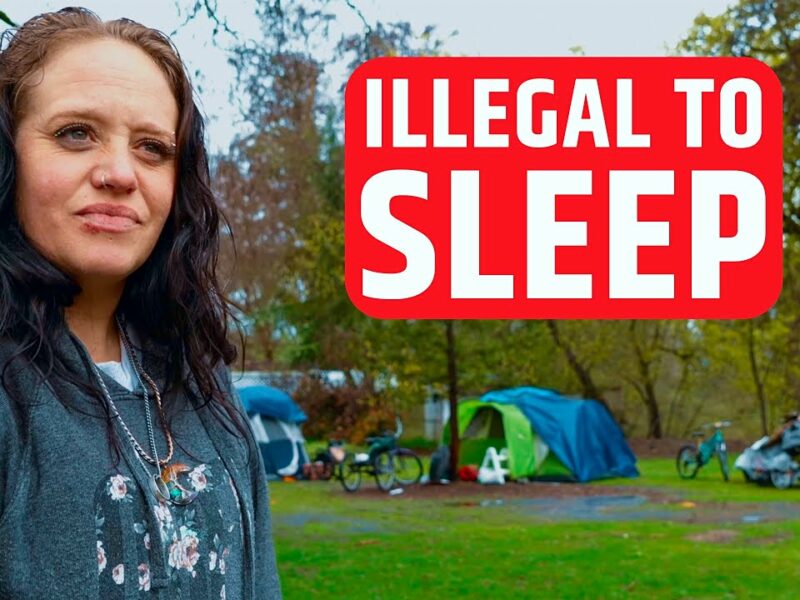Data Disproves Most of the Myths Surrounding Homelessness
Homelessness is a growing crisis wreaking havoc in the United States of America. Most Americans agree that this issue should be prioritized in the courts of public policy, not just public opinion.
Let’s start with the leading myths surrounding homelessness:
Myth #1: The opioid epidemic and the mental health crisis are fueling homelessness.
Contrary to popular opinion, the leading cause of homelessness has nothing to do with drug addiction or mental health disabilities. Multiple studies and academic papers conclude that the lack of affordable housing is the leading cause of homelessness. This problem is followed by unemployment, poverty, and low wages. Mental health and opiates don’t even rank in the top four leading causes.
Myth #2: Homelessness mainly affects middle-aged men.
The middle-aged men you see standing with signs on street corners represent only a fraction of the homeless population. The true face of homelessness is much younger, approximately 11 years old. School records indicate that millions of school-aged children endure homelessness each year. You don’t see them because they are not visible in the streets or the media.
Myth #3: Homeless people beg for change and then spend it irresponsibly.
This is also false. Studies show that homeless people are statistically more responsible and frugal with their finances. In research where homeless people were given small sums of money, most of them managed to obtain permanent housing with meager means.
Myth #4: The answer to the current crisis consists of rehabilitation, involuntary commitment to mental institutions, and criminalization.
Again, false. Rehab and involuntary commitment to mental institutions will not end or even reduce homelessness. And it has been proven that criminalization makes homelessness worse. These are merely convenient instruments touted by crafty politicians.
The biggest perpetuator of homelessness is us – the masses of ill-informed readers spreading misinformation about the subject.
How to Identify Misinformation and Combat Homelessness
Identifying misinformation in the media can be challenging. Still, it is crucial to promote accurate news, which, in turn, promotes effective housing policies that serve to end homelessness, not just disguise it with criminalization tactics.
By combining the following strategies, individuals can develop a more discerning approach to media consumption and help combat the spread of misinformation. Here are some strategies and considerations:
- Cross-Verification with Reliable Sources. Check the information against multiple reliable sources to see if the details align. If multiple reputable outlets report the same information, it adds credibility.
- Fact-Checking Websites. Use fact-checking websites such as Snopes, FactCheck.org, or PolitiFact. These platforms specialize in investigating and debunking misinformation.
- Check the Publication Source. Evaluate the credibility of the publication or source. Reputable and well-established media outlets have rigorous editorial standards.
- Author Verification. Investigate the author’s credentials and expertise in the subject matter. A credible author with relevant expertise adds legitimacy to the information.
- Critical Evaluation of Content. Scrutinize the content for sensationalism, emotionally charged language, or extreme bias. Misinformation often relies on exaggeration or manipulation to evoke strong reactions.
- Look for Citations and References. Legitimate articles and news pieces typically include citations and references to support their claims. A lack of proper citations can be a red flag.
- Check the Date. Ensure that the information is current. Misinformation may involve outdated data presented as recent or lack context due to changes over time.
- Examine Visual Content. Misinformation can be spread through manipulated images or videos. Reverse image searches and video analysis tools can help verify the authenticity of visual content.
- Consider the Tone and Style. An overly emotional or aggressive tone may characterize misinformation. Objective and balanced reporting is a hallmark of credible journalism.
- Question Headlines and Clickbait. Misinformation often uses sensational headlines or clickbait tactics to grab attention. Look beyond the headline and read the full content for a comprehensive understanding.
- Consult Experts or Authorities. Contact experts or authorities in the field to verify information. Academic institutions, government agencies, and subject matter experts can provide valuable insights.
- Be Aware of Confirmation Bias. Be conscious of your own biases and avoid accepting information that aligns with pre-existing beliefs without critical evaluation.
- Social Media Verification. Social media platforms can be breeding grounds for misinformation. Verify information independently before sharing, and check if the post or source has a history of spreading false information.
- Read the Comments Section. Sometimes, users in the comments section may point out inaccuracies or provide additional context. However, this should not be the sole basis for verification.
- Stay Informed About Current Events. Being aware of ongoing events and developments helps contextualize information and identify whether it aligns with the current state of affairs.
Sign Up for Our Newsletter to Learn Even More
Sign up and stay informed to learn about the true struggles of our unhoused neighbors. The Invisible People newsletter and website provide expert insight on the topic of homelessness, which you can pass along in place of misinformation.
As more people wake up to the truth about homelessness and its underlying causes, there will be more public support for viable approaches to the crisis. This crisis is solvable if we work together and tackle misinformation head-on.












